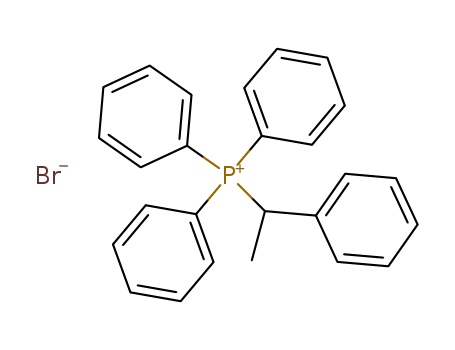- Chemical Name:Triphenyl(1-phenylethyl)phosphonium bromide
- CAS No.:30537-09-8
- Molecular Formula:C26H24 P . Br
- Molecular Weight:447.354
- Hs Code.:
- European Community (EC) Number:651-222-5
- NSC Number:176882
- Mol file:30537-09-8.mol
Synonyms:30537-09-8;Triphenyl(1-phenylethyl)phosphonium bromide;SCHEMBL8053175;AKOS024427477;NSC-176882;Triphenyl(1-phenylethyl)phosphoniumbromide;triphenyl(1-phenylethyl)phosphanium;bromide;P(C(C)c1ccccc1)(c2ccccc2)(c3ccccc3)c4ccccc4;10.14272/YTXKXHMAVVPQCJ-UHFFFAOYSA-M.1;doi:10.14272/YTXKXHMAVVPQCJ-UHFFFAOYSA-M.1





